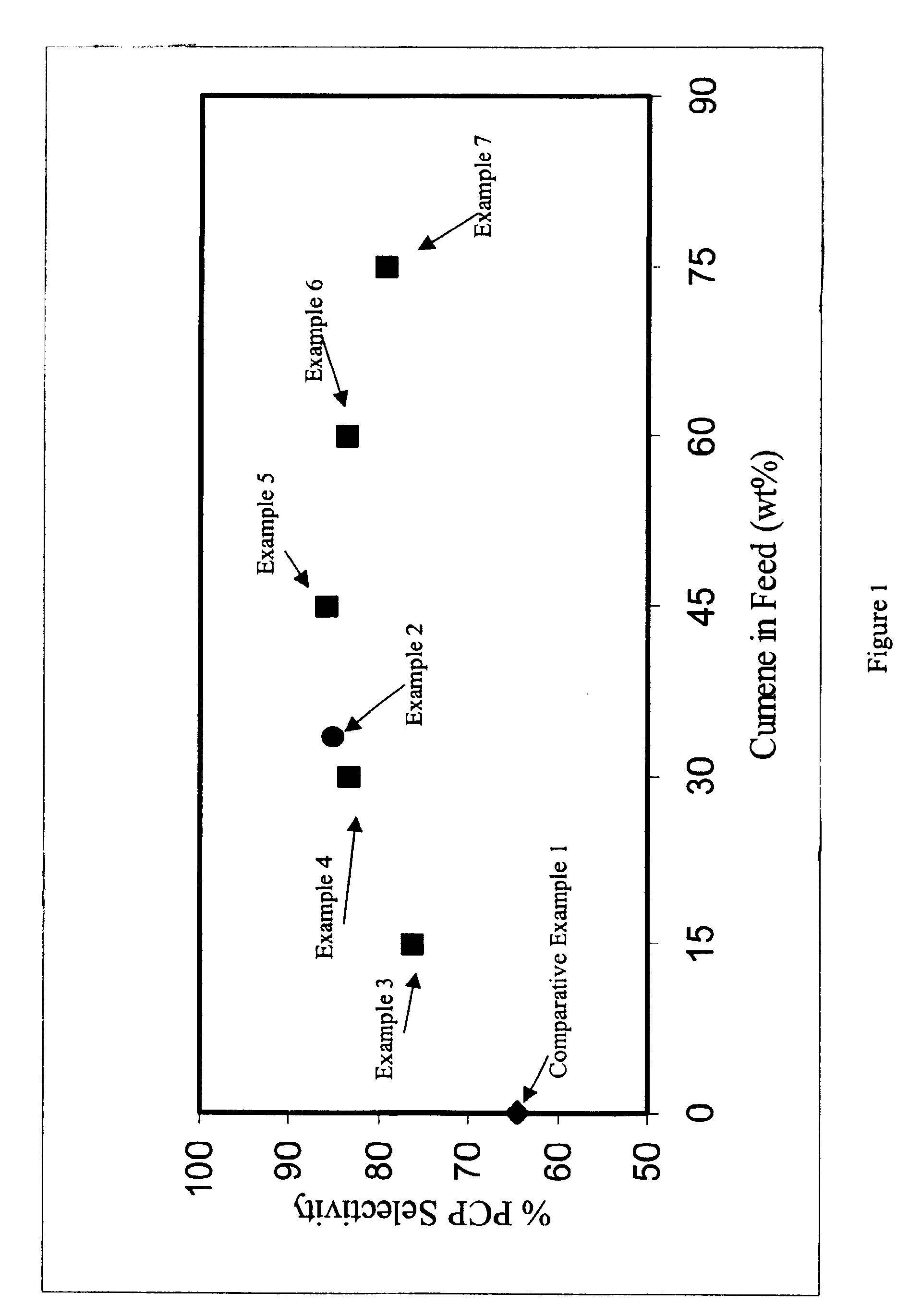Method for the preparation of cumylphenol
a technology of cumylphenol and pcumylphenol, which is applied in the field of synthesis of pcumylphenol, can solve the problems of adding to the cost of cumylphenol production, the cost of purified alpha-methylstyrene, etc., and achieves the effect of cost saving and increasing the selectivity of reaction
- Summary
- Abstract
- Description
- Claims
- Application Information
AI Technical Summary
Benefits of technology
Problems solved by technology
Method used
Image
Examples
example 2
Example 2 was run according to the method of Comparative Example 1, with the substitution of crude alpha-methylstyrene for the pure alpha-methylstyrene. The crude alpha-methylstyrene was obtained from a phenol production plant. The crude alpha-methylstyrene contained about 20 weight percent of alpha-methylstyrene and about 78 weight percent of cumene based upon the total weight of the crude mixture . Using crude alpha-methylstyrene, the selectivity of the reaction for p-cumyl phenol was 85.1%.
examples 3-7
Examples 3-7 were run according to the method of Comparative Example 1, with the substitution of a synthetic mixture of cumene and alpha-methylstyrene for the pure alpha-methylstyrene. The cumene was present at 15, 30, 45, 60, and 75 weight percent based on the weight of the total reaction mixture. Results are shown in FIG. 1.
As shown in the FIG. 1, the selectivity for the desired PCP is a function of the weight percent of cumene in the reaction feed. A surprising result was that an improved selectivity of the reaction was observed with cumene addition as compared with the reaction without cumene. An optimum selectivity resulted at the intermediate concentration of cumene and phenol. This improved selectivity is in addition to the benefit obtained from not having to purify the alpha-methylstyrene before utilizing it to produce cumylphenols, thus saving capital and operating costs. Additionally cumene reduces the viscosity of the reaction mixture enabling higher throughputs in fixed ...
PUM
| Property | Measurement | Unit |
|---|---|---|
| Percent by mass | aaaaa | aaaaa |
| Percent by mass | aaaaa | aaaaa |
| Percent by mass | aaaaa | aaaaa |
Abstract
Description
Claims
Application Information
 Login to View More
Login to View More - R&D Engineer
- R&D Manager
- IP Professional
- Industry Leading Data Capabilities
- Powerful AI technology
- Patent DNA Extraction
Browse by: Latest US Patents, China's latest patents, Technical Efficacy Thesaurus, Application Domain, Technology Topic, Popular Technical Reports.
© 2024 PatSnap. All rights reserved.Legal|Privacy policy|Modern Slavery Act Transparency Statement|Sitemap|About US| Contact US: help@patsnap.com








